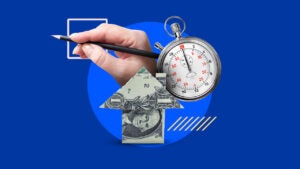What can you use a home equity line of credit (HELOC) for?




Key takeaways
- You can use a home equity line of credit (HELOC) for anything, but some uses are more suitable than others.
- HELOCs are best suited for investments or expenditures that will improve your financial position in some way: renovating your home, eliminating high-interest debt, paying for education or for emergencies, starting a business, and buying property.
- Using a HELOC is not recommended for luxury/discretionary purchases, ongoing retirement income, or if your home is your only substantial asset.
One of the most common ways homeowners can tap their residences for cash is through a home equity line of credit (HELOC). And one of the best aspects of a HELOC is its versatility: You can use the funds for almost anything. But, given the nature of the financing, some uses are more suitable than others.
It’s best to employ HELOC funds for investments or expenditures that will improve your financial position in some way. Here are the six best uses for a home equity line of credit — and a few that are not so ideal.
- Home equity line of credit (HELOC)
-
Secured against the value of your home, a HELOC is a revolving line of credit (much like a credit card). You can borrow funds from it as needed for a set multi-year period, repaying in installments. When this period ends, you can no longer draw funds, but must pay off the balance over a new, multi-year period.
6 best uses for a home equity line of credit (HELOC)
HELOCs tend to be taken out for big-ticket expenses: The minimum line of credit you can establish is often $10,000. In 2024, the average HELOC balance was just over $45,000, according to Experian data. The average credit line (the total amount one could borrow) was just over $149,000 as of Q1 2025.
1. Home improvements or repairs
Home renovations and repairs are among the most popular reasons for opening a HELOC. That’s partly due to the tax advantages: The interest you pay can be deducted from your tax return if the funds are used to substantially improve or repair the home.
Plus, a HELOC lets you access large amounts of money over time as needed, making it perfect for long-term renovation projects and potentially increasing your home’s value.
A HELOC can also be used to make aging-in-place or disability modifications. Again, the interest on the borrowed sums could be tax-deductible if you itemize on your tax return. Again, the interest on the borrowed sums could be tax-deductible if you itemize on your tax return.
2. Consolidating and paying off high-interest debt
The credit card bills have piled up on you — either over the years or due to a big expense. Either way, a HELOC can get you out from under, as it generally offers a lower interest rate than unsecured loans, and certainly a lower rate than your credit card’s APR. So it’s a good choice for paying off credit cards or consolidating other types of high-interest debt.
However, be careful. “Using a HELOC to consolidate debt is only a reasonable option if the individual has dealt with their spending issues; otherwise, digging a bigger hole of debt is a likely outcome,” says Steve Sexton, CEO of Sexton Advisory Group, a San Diego, Calif.-based firm of financial advisors.
You can also use a HELOC to pay off student loans, but understand the tradeoffs. Federal student loans offer forbearance, deferment and income-driven repayment options should you face unexpected financial troubles. Once you’ve retired your loans, you will no longer have access to these programs — and of course they won’t apply to your HELOC debt.
3. Paying for education
Homeowners can use HELOCs to pay for the cost of college tuition. This sort of extended expense is ideal for the HELOC setup: You draw funds as you need them — for a semester or a year — owing interest solely on what you actually take out. You (or your child) can also start paying back the debt sooner, instead of being saddled with it all at once after graduation.
Be sure your lender allows HELOCs to be used for educational expenses. You’ll also want to investigate all possible student loan options before taking this route, especially federal Direct PLUS Loans (which parents take out). You’d want prevailing HELOC rates to be lower or at least competitive.
4. Using as an emergency fund
It’s always a good idea to have an emergency fund that includes three to six months of living expenses. If you don’t, and the unexpected happens, a HELOC can be used to help cover some of these nasty surprise costs, providing a source for cash fairly quickly (though not as fast as some personal loans).
When using a HELOC for this purpose, however, it’s a good idea to have a repayment plan, so you can aim to start proactively saving. You can’t use a HELOC as an emergency fund forever: The draw period (when you can access funds) lasts about a decade at most. After that, you’ll need another source of ready money.
5. Starting a business
A HELOC can provide seed money to take your side hustle to the next level or provide a stream of cash to fund expenses for an existing business. A HELOC’s interest rates may be lower than those of a comparable business loan. And because a HELOC is a secured loan — meaning your home is used to back it — it may be easier to get approved for one.
Remember, the fact that your home is collateral for a HELOC also has its downsides. If your business fails or you experience unexpected financial challenges that make it difficult to remain current on loan payments, the lender can foreclose on the place.
6. To buy property
It’s not unusual for homeowners to access the equity in their homes to buy additional real estate. By tapping into the equity of your current home, you can use the funds from a HELOC as a down payment on a new property, such as a second home, vacation home, or rental property. This approach, often referred to as piggybacking, allows you to leverage your home’s equity to finance the purchase without having to liquidate other investments or savings.
When Bankrate’s Home Equity Insights Survey asked homeowners what they would consider good reasons to access built-up home equity as cash, 16% of the responding U.S. adults cited “other investments.” It was particularly popular with millennials, cited by 30% of those in this home-owning age group.
When should you not use a HELOC?
Advantageous as it can be, a HELOC is not suited for every sort of expense.
Generally, a HELOC is not recommended if:
- Your home is your only real asset: While this line of credit might offer you a short-term fix, remember it’s backed by your home. That means that if you don’t repay what you borrow, your lender can seize your house. And if debt is already a problem, the open line of credit might tempt you to withdraw more than you really need.
- You can get financing with lower fees and lifetime costs: Few loans come for free. HELOCs, in particular, come with plenty of costs, from upfront expenses like a home appraisal and to ongoing ones like a variable (read: likely rising) interest rate. Make sure you weigh your other financing options, such as a personal loan, so you don’t end up overpaying to borrow what you need.
- You’re only thinking about the draw period: While that draw period phase of the HELOC can seem appealing, giving you access to money as you need (or want) it, all good things come to an end. Don’t forget to consider the repayment phase that follows and the way that will affect your cash flow moving forward. Usually, you’ll be repaying the HELOC for somewhere around 20 years.
- Your income fluctuates: In this case, it could be tempting to pull as much as possible from the HELOC, but that could land you in a situation where you struggle to pay back what you’ve borrowed during the repayment period. Remember, monthly repayments can vary due to fluctuating interest rates, creating a strain if your income varies too. In this case, a home equity loan (see below) might be a better option.
- You want to purchase non-essential, big-ticket items: Using a HELOC to buy luxury cars or expensive vacations is risky as it puts your home in danger for discretionary purchases — things that don’t offer investment value or improve your financial profile. Additionally, using a HELOC ties you to long-term payments with depreciating assets and reduces your home equity for future use or bequests.
Is a HELOC a good idea given today’s interest rates?
The rising interest rate environment has affected HELOC rates, and — hovering around 8 percent currently — they’re not the bargain they once were. Still, they remain cheaper than other types of debt, and rates on HELOCs are expected to trend lower over the course of 2025.
Here are some factors to consider when deciding whether a HELOC may be right for you:
- Variable interest rate: Most HELOCs have a fluctuating rate, meaning your monthly repayment amount could rise suddenly and unexpectedly. Ask yourself whether you feel comfortable with that.
- Funding needs: HELOCs offer the flexibility of borrowing what you need and only when you need it, making them a good choice for those who lack a defined sum or those who require ongoing access to funding.
- Responsible borrowing: Opening a HELOC provides access to a line of credit that you can draw from again and again for as long as 10 to 15 years. Managing this type of fund requires discipline and a plan for repayment, or you can easily get in over your head. “For fiscally responsible people, these can be amazing tools. For folks with less financial discipline or security, they can be devastatingly bad,” says Ryan Cicchelli, founder of The Safe Investing Expert, a Cadillac, Mich.-based financial planning firm.
The bottom line on the best uses for a HELOC
Before opening a HELOC, it’s always a good idea to shop around and crunch the numbers, ensuring that the line of credit is truly the most cost-effective option. In addition, you should be diligent about responsibly managing the HELOC and develop a repayment plan that you can stick to. “You can do this by only drawing funds that you feel secure in repaying relatively quickly, making timely payments and not digging in too deep,” Cicchelli explains.
FAQ
Additional reporting by Larissa Runkle
Why we ask for feedback Your feedback helps us improve our content and services. It takes less than a minute to complete.
Your responses are anonymous and will only be used for improving our website.



